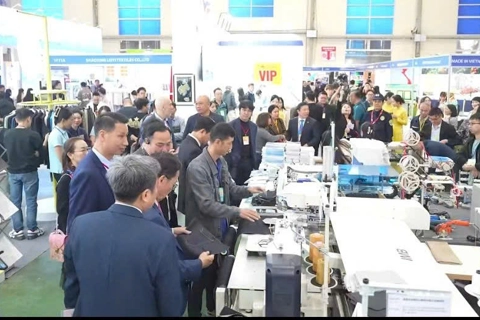Hanoi’s first metro line offcially inaugurated
Hanoians have been eager and excited to experience the country’s first metro project after long wait.
The Cat Linh - Ha Dong metro line in Hanoi, the first of its kind in Vietnam, was officially inaugurated in Hanoi on January 13. After two months of operation, the service got its millionth passenger.
Speaking at the ceremony, Minister of Transport Nguyen Van The said that the transport infrastructure in Hanoi, including the urban railway, has been largely upgraded in accordance with criteria made by the Vietnamese Government, the Ministry of Transport, and the municipal People's Committee.
"This is one of the modern forms of mass transit which will help people get used to public transport, ease congestion, save travel time and reduce environmental pollution. It is a step forward in curbing private vehicles," The said.
Vice Chairman of the Hanoi People's Committee Nguyen Manh Quyen speaks at the inauguration ceremony. Photo: Tuan Luong |
For his part, Vice Chairman of the Hanoi People's Committee Nguyen Manh Quyen informed that the metro ridership is about 15,000 passengers a day.
“The recent surge of Covid-19 patients in Hanoi has caused the number of commuters to fall but students and workers with monthly passes have not abandoned it and the base of metro riders is growing,” Quyen said.
He added that when the service first began, students and workers accounted for only 10% of passengers, but the rate has increased to 20% now and would rise further when more schools and universities reopen after the Covid-19 pandemic is put under control.
The Cat Linh - Ha Dong metro line was put into commercial operation on November 6, 2021. It is one of the ten lines planned for the capital city by 2030, with a total length of 417 kilometers, 82% of it runs above ground and the rest underground.
Ribbon cutting ceremony to inaugurate Hanoi’s first metro line of Cat Linh - Ha Dong route. Photo: Ta Hai |
Hanoians have been eager and excited to experience the country’s first metro project after a long wait. This should have happened back in 2015, but the project has been beset with long delays and cost overruns.
Dang Thi Ngoc Mai, who lives in Ha Dong District where the line starts and works on Giang Vo Street, Cat Linh Ward, where it ends, said she bought the house in Ha Dong five years ago partly because of the anticipation that the trains would soon be operational.
“Now I probably won’t have to worry about slogging through the congested streets every day getting to work or back home. After so many difficulties, I am pleased the project is eventually running, and I found the ride to be quite smooth and quiet, unlike what I have been witnessing in other countries” Mai said.
Dinh Tat Thanh, a resident in Ba Dinh District, shared with The Hanoi Times that he was delighted to be among the first passengers of the sky train two months ago.
“I boarded many urban trains in foreign nations and was glad to see the Cat Linh-Ha Dong line in operation. I hoped the Government will build more urban rail lines to make it easier and more convenient for people to commute,” Thanh added.
Dinh Tat Thanh and his sons enjoy themselves before boarding the metro line. Photo: Viet Thanh |
Others praised the advantages of the mass transit system, especially in terms of convenience, safety and protection from pollution, compared to driving a motorbike, the most popular mode of transport in Vietnam currently.
Around 25,680 passengers have boarded the sky train on the first day of operation, according to the Hanoi Metro, the managing unit of the project.
With a total investment of approximately US$868 million (much higher than the initial estimate of $315 million), the elevated line is more than 13km long and has 12 stations and 13 trains. Each train, whose designed speed is 80km per hour, has four carriages capable of carrying more than 900 passengers.
People entitled to free bus travel are also eligible for the free use of metro service, that is, children under six years old, people with disabilities, the elderly, people with merits to the revolution, and members of poor households.
“The urban rail system is always a priority of the Vietnamese Government and Hanoi’s authorities as this is a modern mode of mass transit that helps reduce traffic jams and pollution,” Vu Hong Phuong, director of Railway Projects Management Unit under the transport ministry, told The Hanoi Times.













